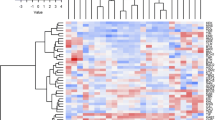Abstract
The morphological characterization allows one to estimate and evaluate the genetic distance among different varieties, identifying heterotrophic groups by means of clustering methods. The objectives of the study were to characterize improved open-pollinated varieties (VPAs) and maize landraces based on the main quantitative agronomic traits and to estimate the variability and similarity between them. Sixteen maize varieties from the southern region of the State of Rio Grande do Sul, Brazil were evaluated. Data were subjected to analysis of variance. For the characterization, the Tukey averages comparison test was performed. The similarity among the varieties was tested using the Tocher optimization method. The differences detected indicate the presence of genetic variability among the studied varieties. According to the Tocher grouping, it was found that some populations have the potential to be selected as parents in breeding programs, maximizing the variability obtained from their crosses. For certain traits, maize landraces do not differ from improved varieties and show high similarity.
Similar content being viewed by others
References
Babic V, Nikolic A, Andjelkovic V, Kovacevic D, Filipovic M, Vasic V, Mladenovic-Drinic S. 2016. UPOV morphological versus molecular markers for maize inbred lines variability determination. Chil. J. Agric. Res. 76: 417–426
Bódi Z, Pepó P, Kovács A. 2008. Morphology of tassel components and their relationship to some quantitative features in maize. Cereal. Res. Com. 36: 353–360
Breseghello F, Coelho ASG. 2013. Traditional and modern plant breeding methods with examples in rice (Oryza sativa L.). J. Agric. Food Chem. 61: 8277–8286
Chen K, Camberato JJ, Vyn TJ. 2017. Maize grain yield and kernel component relationships to morphophysiological traits in commercial hybrids separated by four decades. Crop. Sci. 57: 1–17
Coimbra RR, Miranda GV, Cruz CD, de Melo AV, Eckert FR. 2010. PtCaracterização e divergência genética de populações de milho resgatadas do Sudeste de Minas Gerais. Rev. Cienc. Agron. 41: 159–166
Cruz CD. 2012. Princípios de genética quantitativa. Viçosa, MG. pp 294
Cruz SCS, Pereira FRS, Santos JR, Albuquerque AW, Pereira RG. 2008. Adubação nitrogenada para o milho cultivado em sistema plantio direto no Estado de Alagoas. Rev. Bras. Eng. Agr. e Ambient. 12: 62–68
Dempewolf H, Baute G, Anderson J, Kilian B, Smith C, Guarino L. 2017. Past and future use of wild relatives in crop breeding. Crop. Sci. 57: 1070–1082
Faria PN, Cecon PR, Silva AS, Finger FL, Silva FF, Cruz CD, Sávio FL. 2012. Métodos de agrupamento em estudo de divergência genética de pimentas. Hortic. Bras. 30: 428–432
Gorjanc G, Jenko J, Hearne SJ, Hickey JM. 2016. Initiating maize pre-breeding programs using genomic selection to harness polygenic variation from landrace populations. BMC Genomics 17: 1–15
Gralak E, Faria M, Figueiredo A, Rizzardi D, Neumann M, Mendes M, Scapim C, Galbeiro S. 2017. Genetic divergence among corn hybrids and combining ability for agronomic and bromatological traits of silage. Genet. Mol. Res. 16:1–17
Li J, Bueren ETLV, Jiggins J, Leeuwis C. 2012. Farmers’ adoption of maize (Zea mays L.) hybrids and the persistence of landraces in Southwest China: Implications for policy and breeding. Genet. Resour. Crop. Evol. 59: 1147–1160
Muhammad RW, Qayyum A, Ahmad MQ, Hamza A, Yousaf M, Ahmad B, Younas M, Malik W, Liaqat S, Noor E. 2017. Characterization of maize genotypes for genetic diversity on the basis of inter simple sequence repeats. Genet. Mol. Res. 16: 1–9
Nardino M, Souza VQD, Baretta D, Konflanz VA, Carvalho IR, Follmann DN, Caron BO. 2016. Association of secondary traits with yield in maize F1’s. Ciên. Rural 46: 776–782
Nelson PT, Krakowsky MD, Coles ND, Holland JB, Bubeck DM, Smith JSC, Goodman MM. 2016. Genetic characterization of the North Carolina State university maize lines. Crop. Sci. 56: 259–275
Oliveira AS, Miranda Filho JB, Reis EF. 2015. Variability and inbreeding in semiexotic maize populations. Genet. Mol. Res. 14: 1184–1199
Prasanna BM. 2012. Diversity in global maize germplasm: Characterization and utilization. J. Biosci. 37: 843–855
Rigon JPG, Capuani S, Rigon CAG. 2015. Genetic divergence among maize hybrids by morphological descriptors. Bragantia 74: 156–160
Rotili EA, Cancellier LL, Dotto MA, Peluzio JM, Edmar E, Carvalho V. 2012. Genetic divergence in populations of maize, in Tocantins State, Brazil. Rev. Ciên. Agr. 43: 516–521
Rovaris SRS, Araújo PM, Garbuglio DD, Azevedo CVG, Prete CEC. 2017. Genetic characterization of the 28 maize landraces in Paraná State. Semin. Agrar. 38: 1715–1726
Salami HA, Adjanohoun A, Padonou W, Yacoubou AM, Aly D, Yallou C, Sina H, Baba-Moussa L. 2015. Morphological diversity of corn’s (Zea mays L.) local cultivar and improved varieties in Central and North of Benin. Am. J. Plant. Sci. 6: 2867–2877
Salami HA, Sina H, Wallis NZ, Padonou W, Aly D, Yallou C, Chabi-Sika K, Noumavo PA, Adjanohoun A, Baba-Moussa L. 2017. Agro-morphological variability of Zea mays (L.) accessions collected in Southern Benin. J. Plant Breed. Crop Sci. 9: 1–9
Santos HG, Jacomine PKT, Anjos LHC, Oliveira VA, Oliveira JB, Coelho MR, Lumbreras JF, Cunha TJF. 2006. Sistema brasileiro de classificação de solos. Brasília, DF. pp 306
Sesay S, Ojo DK, Ariyo OJ, Meseka S. 2016. Open Access genetic variability, heritability and genetic advance studies in top- cross and three-way cross maize (Zea mays L.) hybrids. Maydica 61: 1–7
Strigens A, Schipprack W, Reif JC, Melchinger AE. 2013. Unlocking the genetic diversity of maize landraces with doubled haploids opens new avenues for breeding. PLoS One 8: 1–11
Twumasi P, Tetteh AY, Adade KB, Asare S, Akromah RA. 2016. Morphological diversity and relationships among the IPGRI maize (Zea mays L) landraces held in IITA. Maydica 62: 1–9
Vieira LC, Guerra MP, Barbosa Neto JF. 2016. Análise prelinminar de germoplasma de variedades crioulas de milho so Sul do Brasil. Rev. Bras. Milho e Sorgo 15: 557–571
Author information
Authors and Affiliations
Corresponding author
Rights and permissions
About this article
Cite this article
Barros, L.M., Prochnow, D., de Oliveira, V.F. et al. Characterization of Open-Pollinated Maize Varieties from Rio Grande do Sul State. J. Crop Sci. Biotechnol. 22, 31–36 (2019). https://doi.org/10.1007/s12892-018-0051-0
Received:
Revised:
Accepted:
Published:
Issue Date:
DOI: https://doi.org/10.1007/s12892-018-0051-0




